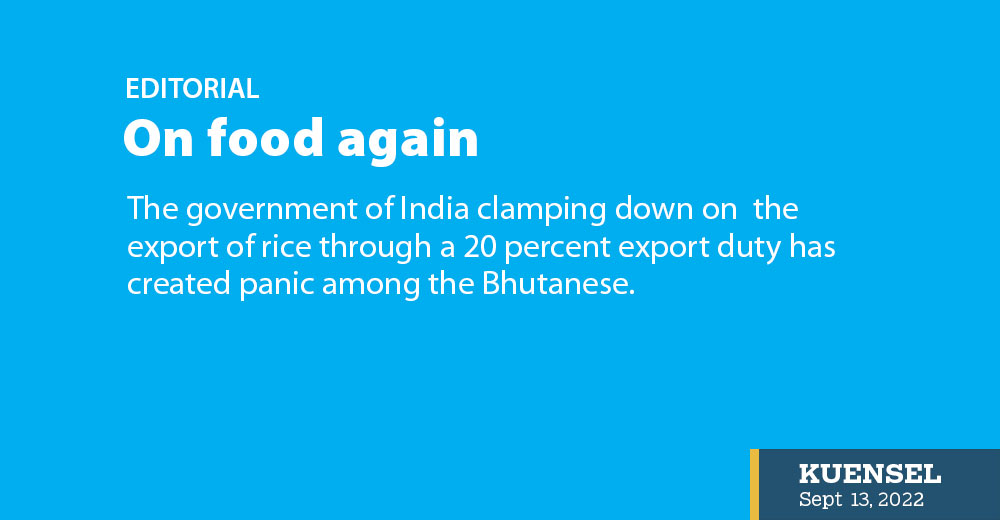The government of India clamping down on the export of rice through a 20 percent export duty has created panic among the Bhutanese.
As a rice-consuming population with almost all the brands being imported, a slight rise in price of the staple diet ignites inflation.
The hope is that Bhutan will be spared from the duty with some quick to point out the bilateral trade agreement between the two countries.
It happened with the export of sugar. But banking on agreements and relations is a short-term solution. If we are to protect ourselves from price fluctuations, we need to grow our own key food items.
There are challenges.
Bhutan will never grow enough rice for its populace. We do not have land, climatic conditions, water or even hands to grow enough rice for all.
Our rice self-sufficiency was 37 percent last year. It was down from 45 percent in 2019 although agriculture officials said that there was a mistake in the statistics and it should have been lower than 45 in 2019.
But we are even making the most of what we have?
The area under paddy cultivation decreased by more than 50 percent between 2017 and 2021. Paddy production decreased proportionally from 86,385MT to 40,508MT in the last five years.
In the meantime, import of rice has been increasing.
In 2021, the country imported Nu 2.1 billion (B) worth of rice, which is the sixth most imported commodity. In 2020, it was the third most imported commodity, worth Nu 2.4B.
Going by the data available, we are happy to be import-dependent. Imports, we have recently seen, are becoming unreliable. The prices may be shooting up this time, but we have witnessed how supply chain disruptions, trade imbalance, bad debt management and global pandemic can impact food supply or food security overnight.
There has been initiatives from successive governments. We have tried high-yielding rice varieties, cold-resistant rice in places where paddy was not grown before or improving irrigation infrastructure and farm mechanisation. However, given the fact that paddy cultivation is on a steep decline, both in terms of acreage and yield, is an indication that we need more intervention.
Farmers still complain of shortage about irrigation water, lack of fertilizers and farming drudgery – the same issues. The result is more fields turning into jungles.
Dependency on rise will grow as many people switch to rice as the staple diet. Imported rice is fast replacing kharang (milled corn) as the staple food while kharang is now only seen as a healthy alternative cooked once or twice in a week.


